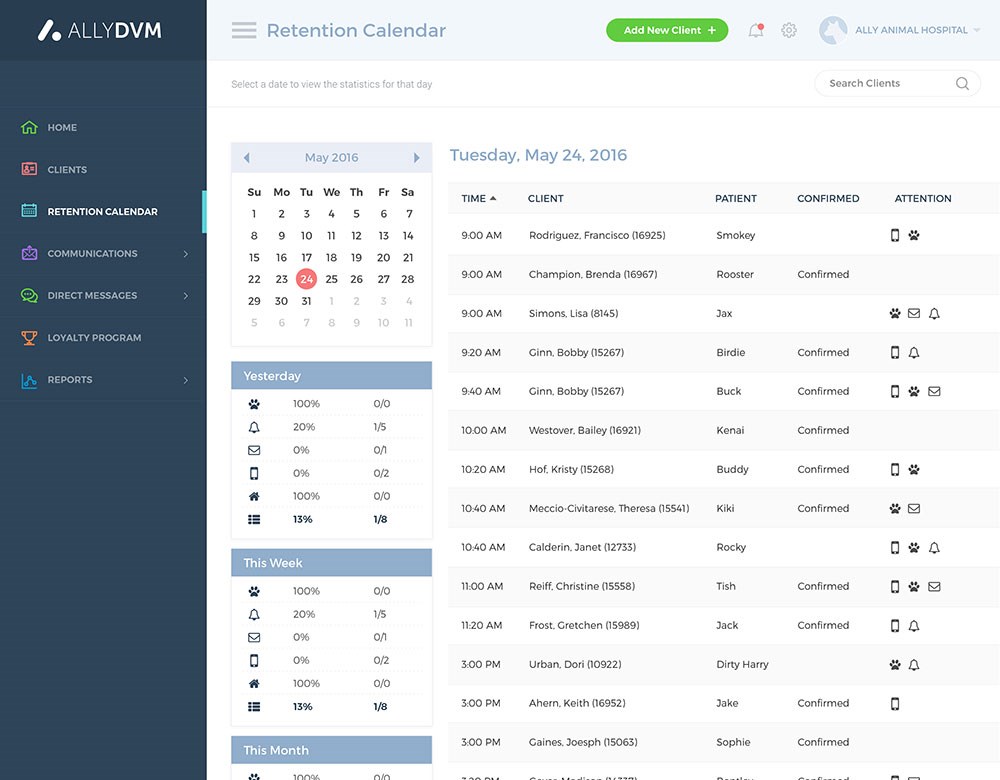Four reasons why technology helps practices keep veterinary clients
By MWI Animal Health

It’s no secret veterinary practice staff are overwhelmed. There are long hours, demanding clients, and a constant stream of pets that need attention. Who has time to worry about finding new clients to grow revenue?
Fortunately, improving revenue can be done within the existing client base. It’s all about having a client retention plan powered by technology and most importantly, staff buy-in. And focusing on keeping existing clients makes smart business sense, as it generally costs five times more to attract a new client than retain an existing one.
“You have to have a process in place, you have to have a plan to do the right things by the pet owners in the practice, ensuring the best customer experience, ensuring the right info is both given to the pet owner and received by the pet owner,” explains Jason Wernli, president, AllyDVM
Here are three reasons a practice should use technology to keep veterinary clients and grow their business steadily.
1. Overcome staffing shortages
Veterinary practices are still feeling the circumstances of the past few years in terms of being short-staffed. The average annual turnover rate for veterinary staff is 23 percent. Less workers means more responsibilities places upon those who do show up. “Without technology, the sole responsibility of reminding people to come back in when their pets are due lies with these human beings,” says Wernli. With all their other day-to-day duties running a practice, it’s easy to see how animal hospitals skip appointment reminder phone calls.
For some practices, technology is the key medium helping them keep veterinary clients. With a client communications platform, staff can easily extend the reach of their messaging. Systems can generate automated emails, text messages, and even postcards to hit target audiences more efficiently than with manual phone calls.
2. Schedule other pets at home
Keeping veterinary clients extends to having clients bring in all their pets for check-ups. At a visit, a new client may mention they have other pets in their household. It’s uncommon, though, for that pet owner to come to the practice with the records for those other pets. The staff must call the previous animal hospital, get the records, and enter them into the practice management system.Wernli says, “We do a good enough job to have the records and cover our bases but really, we don’t go far enough to ensure all the pets and all the households are being reminded. Just because the receptionist scans those records doesn’t mean the system will read them. Staff must take the time to process the records for each pet and create those appointment reminders in the calendar system.
For one out of every four appointments, there is the opportunity to schedule another visit with a different pet in the same household. Can veterinary practices book additional visits if staff asks about those other pets? Practices can experience a six-figure difference in incremental revenue without doing the lift of outbound calls.
3. Update records
“If we don’t do a good job of gathering and creating data, our systems to remind someone to come back may fail us. So, then, as a result, we can’t retain a client,” says Wernli.Updating records starts with talking to the people in front of you. 'Automated communications only work if the correct data is entered into the system. Is the staff capturing the right emails, phone numbers, and mailing addresses? These points of data are huge when it comes to moving the needle for overall health of pets as well as profitability and revenue.
Without accurate information, pets and the chance to keep veterinary clients will slip through the cracks, causing missed financial opportunities for the veterinary practice.
4. Initiate forward booking conversations
Staff should use forward booking conversations, powered by retention calendars, to keep veterinary clients. The secret to success is how those conversations are framed.If a receptionist asks, “Would you like to set up your next appointment for 1 year from now?” it’s no wonder a pet owner says no. Who knows what they’re doing that far in advance?
Yet if the conversation is framed as a service to the pet owner, interest in forward booking will increase. The receptionist might instead say, “Now, I know you have no idea what you’re doing a year from now, so we’ll put you on the calendar and we’ll reach out a couple weeks in advance and if you need to change the appointment, you absolutely can. I just want to a make sure I have you on the books.”
Forward booking conversations lead to higher retention rates, with pet owners coming in more often, resulting in better health outcomes for the pets. Wernli explains, “I always stress, forward booking has to be at the heart of what everyone does right now. Even if we think we don’t have time, this will free up and give us more time in the future.”






